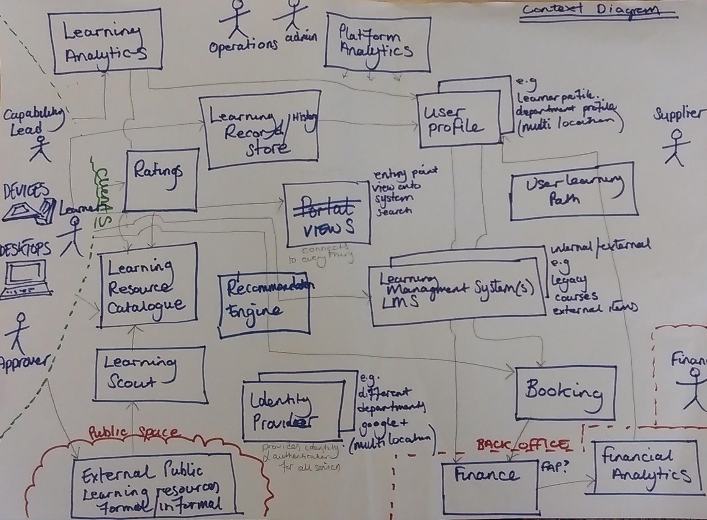When we began our alpha, we wanted to understand what a learning service could look like if it was designed around the needs of users - a more personalised, relevant and informal service.
Our team is small and multidisciplinary and based at the Government Digital Service where we haven't been affected by the technology constraints of the current service.
I’m the Technical Architect for Civil Service Learning Digital (CSLD), and a newcomer to learning and development online services; I've only used 'Blackboard' to access courses eight years ago. And like most people who start working on something new, I’ve had to get to grips with a new technical language, standards, formats and software.
The current service
The existing CSL service offers three types of formal, more traditional learning: e-learning; face-to-face classes and websites such as GOV.UK, which offer guidance and information. The service also supports professions within government (eg the finance profession), and uses tools like the competency framework.
E-learning is a big part of what CSL offers. It comes in the form of multimedia content, typically managed by educational software, such as a learning management system (LMS).
LMSs manage multimedia content in large organisations, and are used to enrol learners onto courses and track their progress.
Until recently most civil servants have accessed learning through a browser on a desktop computer. One of CSL’s priorities has been keeping the e-learning content compatible with older browsers used across the Civil Service.
As users increasingly rely on a wide array of devices (eg smartphones and tablets), LMS software has evolved. How we use our devices influences how we learn so it’s important users can access learning when there’s no wifi or internet connectivity. For example, it would be useful to download learning content so you can still use it when you're offline, and then synchronise when you're connected again.
When demand for this functionality increases, it should be met. As LMS software evolves, particularly the open source alternatives, it will at least meet some of these demands.
Why we need to change
LMSs can meet some user needs within an organisation but not all. As the learning and development industry moves forward, there are some user needs that LMSs cannot easily meet.
LMSs don’t allow users to add ‘self-directed' learning’ to their learning plan. (Self directed learning is when people use their initiative and seek out learning opportunities for themselves.) It can be formal or informal and span many different formats, eg online courses (taken outside of CSL), recorded conferences on YouTube, and reading or writing relevant blog posts.
‘Adaptive Learning’ is a more personalised learning experience that’s based on a user’s learning history and what the system knows about that person (sometimes known as ‘user context’). This may include a record of a user’s learning, their department, team, objectives and colleagues. Types of adaptive learning include recommendations that appear when you're looking for content, or it could be a tailored learning plan.
We know from our user research sessions that CSL learners need a more personalised learning service.
In addition, as the quality and variety of free online learning opportunities increases (eg TEDTalks, Slideshares etc), so does the need for civil servants to share them easily with their colleagues.
How the change can happen
It's no mean feat to move from the formal, centralised, content-centric learning approach we have at the moment, to one that accommodates the vast array of rich learning material outside of CSL.
Part of the solution would be to reference useful learning content rather than storing it all. References could be Uniform Resource Locators (URLs), which can be associated with descriptions, tags, comments and reviews.
The data contained in these references would be dynamic, so they could feed into learning analytical software, or similar systems. It’s critical that this data can be edited or updated at any point by learners rather than being the sole responsibility of LMS administrators.
This would be a significant shift in approach for everybody involved, and it won’t happen overnight. A sensible plan would be to gradually introduce new functionality while introducing new software to support it.
To do this we’d need to restructure the current software by breaking out its core functions into different services. These functions are entwined in the Learning Management System. I’ll talk more about this restructuring in a future post.
Don't forget to sign up for email alerts.
